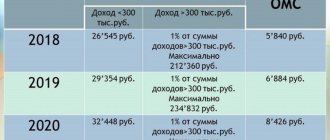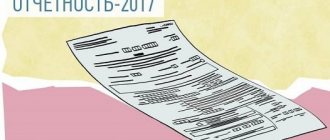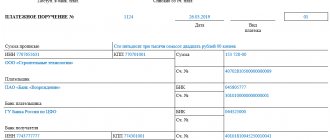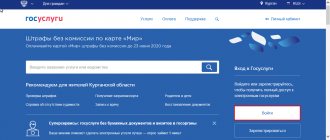What is a currency transaction type code?
KVBO is a five-number value indicating the type of transaction. The code is selected depending on the purpose of the payment and the content of the documents accompanying the transaction. If the payment order and code do not match, the payment is rejected. The list of QVBOs is contained in Central Bank Instruction No. 181-I dated August 16, 2020.
Where should I put the code? If this is an order for a transaction in rubles, you need to put it before the text about the purpose of payment. In other banking documents, KVVO is indicated in a line specially designated for this. The code is both alphabetic and numeric values. There is no need to put spaces or other symbols between letters and numbers.
KVVO consists of two parts. The first indicates the class of the transaction, the second – its essence. Let's look at an example. Operation code – 10100. Its components:
- 10 – indicates the export of products from the territory of Russia.
- 100 – indicates that the buyer made an advance payment.
The very presence of this code means that this is a transaction with a foreign counterparty.
FOR YOUR INFORMATION! Sometimes an accountant encounters problems when choosing a KVBO. There are a lot of codes in the Central Bank instructions. It is not always easy to decide which one is suitable for a particular operation. If an accountant is afraid of making a mistake, he can ask a representative of the servicing bank for advice.
Results
The transaction type code in the payment order must be filled in for those transactions that are foreign exchange from the point of view of the Law “On Currency Regulation” dated December 10, 2003 No. 173-FZ and are carried out in rubles.
The code is written in the “Payment purpose” field before the text: {VOХХХХХ}, where ХХХХХ are the numbers from Appendix 2 of instruction No. 138-I.
If the indicator is filled out incorrectly, the bank will return such documents.
The guarantee that the documents will be accepted by the bank is the conditions specified in the service agreement that payment orders are drawn up by the bank itself. This opportunity is provided by clause 3.6 of instruction No. 138-I.
payment order questions and answers terms
Question: When transferring money from a foreign currency account to a Sberbank ruble account, you must indicate the VO Code in the details. The bank knows nothing about this. Who should I contact with this question?
Answer: You need to seek help from the responsible employee (employees) of the bank, who has the right to carry out currency control actions on behalf of the authorized bank as a currency control agent, and in simple words, you need to seek help from the currency department of the bank. From October 1, the procedure for currency control on customer transactions will change, so it is better for you to deal with this issue using the new procedure.
VO Code is the code for the type of currency transaction. The list of currency and other transactions of residents and non-residents and the transaction type codes used for them can be found in Appendix No. 2 to Instruction No. 138-I dated June 4, 2012.
Instruction of the Bank of Russia dated June 4, 2012 No. 138-I “On the procedure for the submission by residents and non-residents of documents and information related to the conduct of foreign exchange transactions to authorized banks, the procedure for issuing transaction passports, as well as the procedure for authorized banks to record foreign exchange transactions and control over their conduct” comes into force on October 1, 2012.
In paragraph 1.6 of this instruction, the Central Bank of the Russian Federation prescribed the following:
This Instruction applies to non-residents and residents who are legal entities (with the exception of credit institutions and the state corporation "Bank for Development and Foreign Economic Affairs (Vnesheconombank)"), individuals - individual entrepreneurs and individuals engaged in private practice in accordance with the legislation of the Russian Federation ( hereinafter referred to as residents).
The requirements of this Instruction do not apply to non-resident individuals
In paragraph 3.2. The instructions describe the procedure for determining the VO Code and its location in the settlement document, namely:
In the payment document for a currency transaction, before the text part in the “Purpose of payment” detail, there must be a code for the type of transaction from the list of currency and other transactions of residents and non-residents given in Appendix 2 to this Instruction (hereinafter referred to as the code for the type of currency transaction), which corresponds to the purpose of the payment , as well as information contained in the documents submitted by the resident related to the specified currency transaction.
Information about the code of the type of currency transaction must be enclosed in curly brackets and have the following form:Indentation (spaces) inside curly braces is not allowed.
The symbol "VO" is indicated in capital Latin letters
So, for example, when transferring funds, the VO Code may be as follows:
- { VO61150 }
— Transfers of foreign currency or currency of the Russian Federation from a resident’s account opened with an authorized bank to the same resident’s account opened with a non-resident bank - { VO61140 }
— Transfers of foreign currency or the currency of the Russian Federation from a resident’s account opened in a non-resident bank to the account of this resident opened in an authorized bank.
If your transfer is planned to be carried out within the territory of the Russian Federation, then according to the Federal Law “On Currency Regulation and Currency Control” dated December 10, 2003 N 173-FZ, currency transactions between residents are prohibited, except for transfers to close people, namely:
transfers by resident individuals from their accounts opened with authorized banks in favor of other resident individuals who are their spouses or close relatives (relatives in a direct ascending and descending line (parents and children, grandparents and grandchildren), full-blooded and half-brothers and sisters (who have a common father or mother), adoptive parents and adopted children), to the accounts of these persons opened in authorized banks or in banks located outside the territory of the Russian Federation (Article 9, clause 1.17).
The digital code of the currency transaction in the payment order is filled in when drawing up settlement documentation for payments in foreign currency. Why exactly is it necessary to indicate such information and what legislative acts are regulated by the KVVO - more on this later.
Code groups
The KVVO group is the first 2 digits that reveal the class of the operation. Let's look at these groups and their meaning:
- 01 and 02 – non-cash conversion payments.
- 10 and 11 – payment for export or import of products.
- 12 and 13 – payment for products without import and export.
- 20 and 21 – payment for services, work, rights to intellectual activity.
- 22 and 23 – payment under mixed type agreements.
- 30 – payments for real estate.
- 32 – payment under an agreement for assignment of claims.
- 35 – other payments.
- 40 and 41 – issuance of loans.
- 42 and 43 – payment of loans and interest on them.
- 57 – payment under trust agreements.
- 58 – payment under brokerage service agreements.
- 70 – transactions not related to trade (for example, transfer of salary or pension).
- 90 – other operations.
The next three numbers reveal the contents of the operation. Example: code 70 affects a non-trading transaction. The last numbers indicate which transfer was made. For example, this could be the payment of travel allowances.
About the details
Details are mandatory information for a payment order
. If they are missing, the bank will not be able to fulfill the client’s orders related to money transfers. Each detail is assigned its own number. It is important to remember that in order to avoid unpleasant situations, the order must be filled out with maximum accuracy.
Don't create unnecessary difficulties for yourself. Enter detailed information in the payment explanation:
- Be sure to include the contract number and date.
- The name of the product or service for which the payment is being made.
- Type of payment under the agreement (advance payment, repeat payment, etc.).
Before making a payment, you must consult with your partner and clarify all possible details.
KVBO for operations
Here are the codes that usually accompany operations:
- 10100. Prepayment for the export of a batch of products from the territory of Russia.
- 10200. Deferred payment for a shipment transported out of the country.
- 11100. Advance payment to a foreigner for products imported into the country.
- 11200. Settlements with a resident if he is given a deferred payment for a consignment imported into the country.
- 12060. Payment for goods sold by a non-resident. It is assumed that the products were sold abroad, without import into the Russian Federation.
- 13010. Payment from a foreigner to a resident for goods sold in Russia.
- 20100. Prepayment of services or goods in favor of a resident.
- 20200. Payment between a non-resident and a resident for services or work.
- 20400. Payments under agreements on assignments, guarantees to the resident.
- 20500. Payments under guarantee agreements to a non-resident.
- 21100. Advance payment for services or work in favor of a foreigner.
- 35030. Payment to the resident for other actions.
- 35040. Payment in favor of a foreigner for other actions.
- 41030. Lending to a resident by a non-resident.
- 42015. Payment of the principal debt to a non-resident, if the resident has corresponding obligations.
- 61100. Movement of currency from one account to another.
- 61135. Transfer of currency from a resident’s account to an account in another bank.
- 70060. The resident transfers remuneration to the foreigner for work.
- 99090. Other actions and translations not listed above.
This is a list of the most common KVBOs. The remaining codes are in Central Bank Instruction No. 181.
Other operations
KVBO is also needed when working with foreign currency:
- 01010 – sale of currency for rubles.
- 01030 – purchase of currency for rubles.
Code usage example
Products were purchased from a non-resident. It was transported to Russia based on the provisions of a foreign trade agreement. The required code depends on the selected payment type:
- 10100 – for prepayment.
- 10200 – postpaid.
What to do if the goods of a non-resident are located in Russia? Code 13010 is used. The validity of its use is confirmed by an invoice with the Russian address of the product location.
FOR YOUR INFORMATION! Code 13010 is not suitable for fuel and other resources for vehicle operation. The purchase of fuel is accompanied by these KVBO: 22110 (prepayment transaction) and 22210 (postpayment).
What designations do KKVO have?
Let's look at the main KVBOs, which are indicated in brackets after the Latin letters. Among the many codes used when conducting currency transactions, a common one is KVBO for paying wages to a non-resident. In this case, use KVVO 70060
.
Basic KVBO
:
In addition, KVBO must be indicated in the following situations
:
- When a certificate is filled out stating that currency movements were carried out.
- In case of filling out payment orders for payment in Russian rubles.
The requirement to indicate a code, which is a cipher for currency movements, also applies to individual entrepreneurs who, in accordance with the current legislation of Russia, are engaged in running their own business.
The legislative framework of the Russian Federation determines the list of actions
, which are classified as currency:
- purchase by a resident of some currency or valuables (being foreign currency);
- purchase or use by two persons (resident and non-resident) of currency values, currency and securities;
- import or export outside the territory of Russia of Russian rubles, valuables and securities;
- operations related to the transfer of foreign and national currencies, securities that have value in accounts opened in the Russian Federation or abroad;
- transfers made by non-residents in foreign currency (rubles), securities. of value.
Remember that operations, according to regulatory legal acts, also include operations that are carried out in Russian rubles
. It is also worth noting that the KVVO must necessarily correspond to the information that the resident provides to the bank. This code fits into a field called .
In addition, according to legislative documents, transfers that go through bank accounts or without them can only be made with confirmation of settlement
. These include:
- Payment order.
- Electronic funds transfer.
- Letters of credit.
- Collection orders.
- Payment transfers upon request for receipt.
Code when paying wages to a non-resident
The company's staff may include non-residents. A non-resident is any person without a Russian passport or citizenship. Within the framework of currency control, it does not matter how long the foreigner lived in Russia. In any case, he is considered a non-resident. When paying remuneration to a foreign person, codes are also used.
Payments in favor of a non-resident are indicated by code 70060. But to use this KVBO, it is not enough to provide only a payment order to the bank. Most likely, you will also need an employment agreement with a foreigner and a copy of his passport.
Remuneration for an employee is not only salary, but also other payments. And each payment is assigned its own code:
- 70200 – payments according to the advance report (for example, travel expenses).
- 70030 – social payments (for example, financial assistance).
- 70120 – payments made by court decision.
Upon payment, accompanying documents are sent to the bank. Their list depends on the type of operation. For example, a non-resident is accrued travel allowances. In this case, a business trip order is sent to the bank.
How to fill out a payment order at the request of the tax office in 2020
Filling out the payment order form at the request of the Federal Tax Service has its own peculiarities. For convenience, we have collected them in a table:
| Field | What to indicate |
| Reason for payment (106) | Enter "TR". This means that the debt is repaid based on the tax claim received. |
| Tax period indicator (107) | Here, indicate the payment deadline, which is noted in the Federal Tax Service's requirement. For example, if you pay tax for the 2nd quarter of 2020, indicate in the payment order form: KV.02.2017 |
| Document number (108) | Tax claim number. |
| Document date (109) | The date of the document requesting the Federal Tax Service is transferred to this field. |











